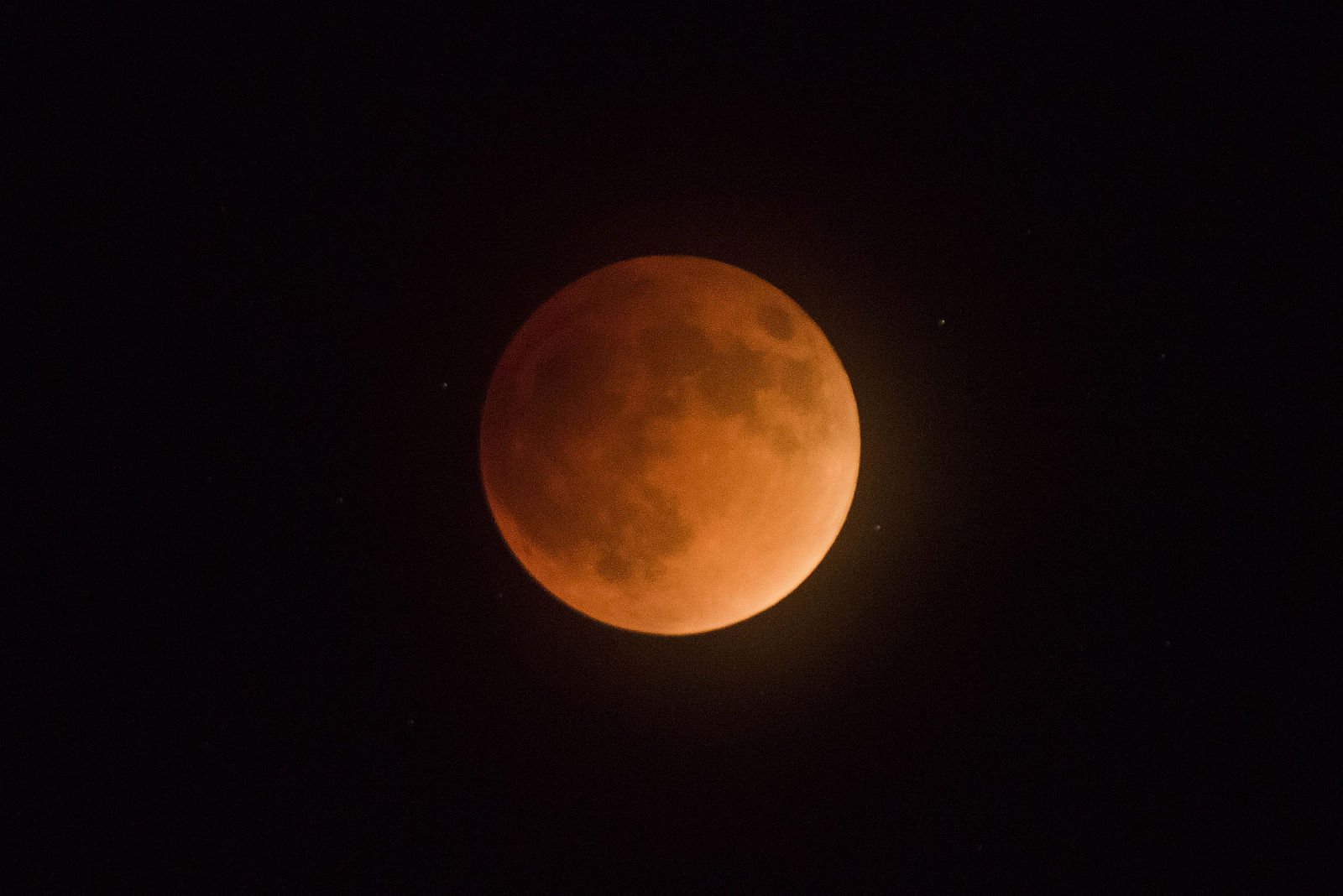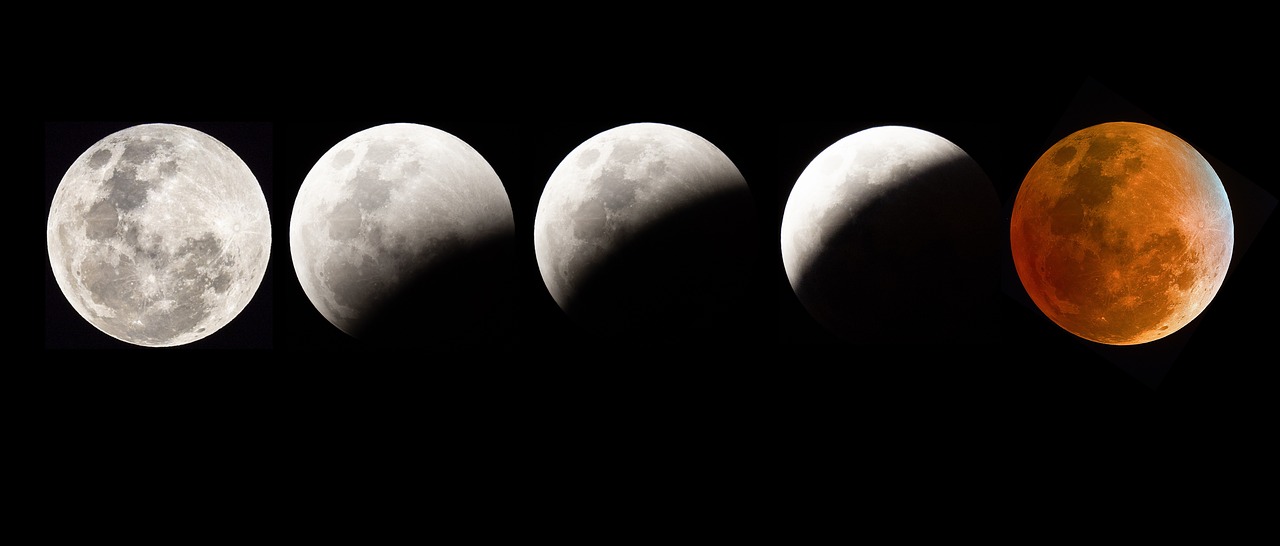Super Blood Wolf Moon Visible on Maui Jan. 20
VIDEO: In case of clouds, TimeandDate.com is streaming the Super Blood Wolf Moon live beginning at 5 p.m.
A complete lunar eclipse will occur on Jan. 20 and 21, 2019, depending where on the globe you are viewing from.
This longest lunar eclipse to take place this century will be visible in the US, Canada, South America, parts of Europe, Asia and Africa.
The total lunar eclipse will be fully visible on Maui on Sunday, Jan. 20, 2019, beginning at 6:41 p.m.
| Event | UTC Time | Time in Wailuku* | Visible in Wailuku |
|---|---|---|---|
| Penumbral Eclipse begins | Jan 21 at 02:36:29 | Jan 20 at 4:36:29 pm | No, below the horizon |
| Partial Eclipse begins | Jan 21 at 03:33:54 | Jan 20 at 5:33:54 pm | No, below the horizon |
| Full Eclipse begins | Jan 21 at 04:41:17 | Jan 20 at 6:41:17 pm | Yes |
| Maximum Eclipse | Jan 21 at 05:12:14 | Jan 20 at 7:12:14 pm | Yes |
| Full Eclipse ends | Jan 21 at 05:43:15 | Jan 20 at 7:43:15 pm | Yes |
| Partial Eclipse ends | Jan 21 at 06:50:39 | Jan 20 at 8:50:39 pm | Yes |
| Penumbral Eclipse ends | Jan 21 at 07:48:02 | Jan 20 at 9:48:02 pm | Yes |
* The Moon is below the horizon on Maui some of the time, so that part of the eclipse is not visible.
This will be the first and only total lunar eclipse of 2019. The only other lunar eclipse during the year, a partial lunar eclipse, will take place on July 16 and 17.
A total lunar eclipse is sometimes called a Blood Moon because of it reddish color.
This particular full moon will be “super-sized,” having reached its perigee—the point on its orbit closest to Earth—on Jan. 20. Known as a Super Moon, Supermoon, or Super Full Moon, it may look bigger and brighter than a normal full moon.
The eclipsed full moon has also been nicknamed the Wolf Moon, after howling wolves that can be heard during this time of the year in the Northern Hemisphere.
The confluence of a full lunar eclipse and its perigee position has prompted the name Super Wolf Blood Moon or the Super Blood Wolf Moon.

Totality during a lunar eclipse, direct sunlight is being blocked by the Earth. The only light reaching Earthling eyes is sunlight refracted by our atmosphere, producing a reddish color. PC: Wikipedia
Bottomline: We’re going to see a reddish, total lunar eclipse during the first full moon of the year—which means the sun, Earth and moon will be in a straight line for a short time—while the moon is also at its closest distance to the Earth.
There is a lot of speculation “out there” questioning whether a lunar eclipse can “trigger” natural disasters like earthquakes and volcanic eruptions, especially during this month’s much-hyped Super Blood Wolf Moon.
Well-known on the islands is the fact that the moon’s gravitational pull on our planet, which is strongest during full and new moons, increases ocean tides.
According to the USGS, earthquakes may be up to three times more likely during high tides, but the agency explained that they’re still very unlikely.
“You must stop and realize that the background probability is, in general, very low in a given place and year (fractions of a percent), so that raising this tiny probability by a factor of 3 during high tides still results in a very tiny probability.”
The USGS has also said that there may be a correlation between the lunar cycle and eruptions of Hawaiian volcanoes, but that attempting to predict eruptions around tides or the moon “would be absurd.”
“In the Hawai’i example of 52 eruptions since January 1832, there have been nearly 3,900 tidal maximums, of which roughly 3,850 of them went by without causing an eruption. Statistically, this is about a one percent chance that any tidal maximum will affect the start of an eruption.”
Although the correlation between earthly disasters and lunar events seems “super weak,” the opposite is actually more accurate, at least for this lunar viewing event.
According to a science education website, pollution spewed by Anak Krakatau’s eruption in Indonesia may darken an already red moon during this eclipse, making it more colorful than usual.
The specific red hue that will develop cannot be predicted, the site said, but there is reason to suspect that this year’s will be deep.
The volcano erupted with explosive force on Dec. 22, 2018. The shock was so powerful that it sent a tsunami racing ashore the beaches of the Sunda Strait, killing more than 400 people, according to the Red Cross.

This plume of ash and more towered to 10 miles, according to an analysis of data collected by a Japanese weather satellite. Much of the aerosol and particulate matter was swept up by the jet stream—the current of air that snakes around Earth about 6 miles above the surface.
From Indonesia, it takes about two weeks for this high-altitude air pollution to make one round-the-world trek. So by now, all the aerosols are fully mixed within the Southern Hemisphere’s upper atmosphere.
Since it’s summer there, the Southern Hemisphere is pointed toward the sun. So any light passing through Earth’s atmosphere during totality will stream through the area where all of that volcanic pollution is still “hanging out.” That should filter out even more sunlight than during a typical eclipse.
So if Sunday night’s moon looks darker, browner or more obscured than usual for an eclipse, its was most likely caused by volcanic activity.
Maui Now attempted to contact the USGS on the Big Island for comment… but due to the lapse in appropriations because of the ongoing government shutdown, the USGS Hawaiian Volcano Observatory public information officer-geologist was prohibited from conducting work as a federal employee, “including returning phone calls and emails, until further notice.”
The USGS director did not reply to our inquiry by publication time.









